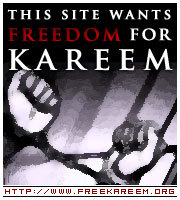PM Manmohan Singh’s speech at the National Development Commission meeting has been twisted out of context and given a politically volatile color by the media and sensing the electoral gains this controversy could give them the BJP has predictably and gleefully latched on to it. This is what the PM said:
"I believe our collective priorities are clear: agriculture, irrigation and water resources, health, education, critical investment in rural infrastructure, and the essential public investment needs of general infrastructure, along with programmes for the uplift of SCs/STs, other backward classes, minorities and women and children. The component plans for Scheduled Castes and Scheduled Tribes will need to be revitalised.
"We will have to devise innovative plans to ensure that minorities, particularly the Muslim minority, are empowered to share equitably in the fruits of development. They must have the first claim on resources. The Centre has a myriad other responsibilities whose demands will have to be fitted within the over-all resource availability."
|
And this is what the media twisted it into:
Prime Minister Manmohan Singh courted controversy in his address at the National Development Council on Saturday by saying that Muslims should have the first claim on the country's resources.
There's a split down the middle over the Sachar panel's report. Muslims are in such a miserable state that the Prime Minister wants top priority for minority development schemes. At the National Development Council meeting attended by most chief ministers, Manmohan Singh was emphatic.
“We will have to devise innovative plans to ensure that minorities, particularly the Muslim minority, are empowered to share equitably in the fruits of development. They must have the first claim on resources,” Singh said.
|
Most of the headlines screamed like this:
Muslims must have first claim on resources: PM
|
As a consequence of this unnecessary controversy about Rs 1.23 crores of the taxpayers’ money have gone up in smoke because BJP decided to disrupt the Parliament today for political dividends and both houses had to be adjourned for the day.
The whole development is condemnable. In this first place the PM himself had no right to make such a statement. One of the fundamental rights of the citizens guaranteed by the Constitution is the right to equality. The PM’s statement completely violates this right of the citizen. Every citizen of this country has equal right on the resourses of this country and not just the underprivileged or the minorities.
It was very clear to anyone who heard the PM speak yesterday. Whichever journalist wrote that news report clearly wasn’t a logical person. Either he/she was unable to follow what the PM said due to his/her poor command over the language or the devil in him/her decided to twist the speech to give it a political colour.
This was all that the BJP was waiting for. The word “Muslim” simply rejuvenates them. With elections in politically important Uttar Pradesh and other states nearing, this twisted statement was something if stirred up could polarise the society on communal lines and consolidate the Hindu vote bank behind BJP. It is important for BJP to win the majority of the states that are going to poll next year if they want to mount any worthwhile challenge to the UPA in the next general elections. BJP already has a good chance of winning in Himachal Pradesh, Uttaranchal, Punjab and Gujarat.
It is Uttar Pradesh that is still a gamble. It is here the BJP vote bank has to be consolidated by communal issues, as anti-incumbency in this state will not benefit BJP because the Hindu vote in this state is already divided on caste lines. At present UP’s Muslim vote stands divided because the Congress, the Samajwadi Party and Bahujan Samaj Party are vying for their votes. If the Muslim vote splinters, then it is advantage BJP in many UP constituencies. If Mayawati and the Congress gang up, then the Muslim vote will consolidate behind this alliance. On the other hand if Mayawati and BJP gang up then the Muslim vote will split with major chunks coming to the Congress and SP. If status quo is maintained or Congress and BSP gang up, then BJP has no option but to polarise the UP vote bank if they want to win in UP. It is in this context the BJP is hoping to cash in on the distorted speech of the PM by the media by keeping the fire burning till it ultimately turns into an inferno.
As for the Congress it is better not to mention the word Muslim anywhere/anytime till the state elections are over. But I don't think it is possible for them to do so. After all some old habits die hard.


















